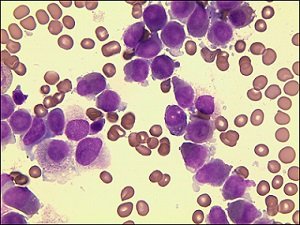
Acute promyelocytic leukemia (APL) is a special subclassification of acute myeloid leukemia (AML) with a favorable clinical outcome. The typical karyotype of APL is the translocation of chromosomes 15 and 17, which is described as t(15;17) and causes the PML/RARα fusion gene at the molecular level. Previous studies have shown that some APL cases may harbor other complex karyotypes instead of t(15;17). The prognosis of these patients varies.
In the case report and literature review published in the journal BJBMS, the authors described an APL patient with a novel complex karyotype that masked t(15;17). A 62-year-old man with typical morphology and clinical features of APL with a complex karyotype including add(11)(p15) and t(13;20)(q12;q11.2) without typical t(15;17) assayed by the G-banding analysis. The fluorescence in situ hybridization with a PML/RARα dual-color DNA probe showed an atypical fusion signal, quantitative real-time polymerase chain reaction (PCR) analysis showed PML/RARα fusion transcripts, and next-generation sequencing detected FLT3, WT1, and KRAS gene mutations. The patient achieved complete remission after treatment with conventional chemotherapy combined ATRA and ATO.
Although the mechanism of this kind of cryptic variant remains unknown, the authors conclude that the cryptic PML/RARα fusion with add(11)(p15), t(13;20)(q12;q11.2) seems not to alter the effectiveness of chemotherapy combined with all-trans retinoic acid and arsenic trioxide. Based on their report, the authors believe that the patient with such complex karyotype still can benefit from the front-line regimen.
Reference:
Editor: Edna Skopljak, MD
Leave a Reply